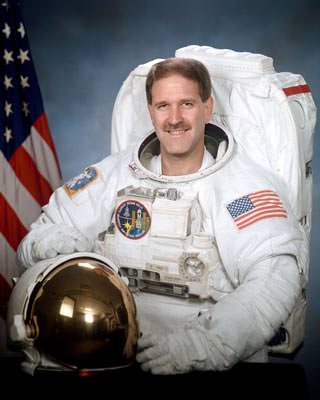[/caption]
As was rumored earlier, NASA has named physicist and former astronaut John Grunsfeld as their new associate administrator for the Science Mission Directorate.
“It is an honor and a privilege to be offered the opportunity to lead NASA’s Science Mission Directorate during this exciting time in the agency’s history,” Grunsfeld said. “Science at NASA is all about exploring the endless frontier of the Earth and space. I look forward to working with the NASA team to help enable new discoveries in our quest to understand our home planet and unravel the mysteries of the universe.”
Grunsfeld is taking over for Ed Weiler, who retired from NASA on Sept. 30, and Grunsfeld will officially start his new job on Jan. 4, 2012.
Grunsfeld currently serves as the deputy director of the Space Telescope Science Institute in Baltimore, which manages the science program for the Hubble Space Telescope and is a partner in the forthcoming James Webb Space Telescope. His background includes research in high energy astrophysics, cosmic ray physics and in the emerging field of exoplanet studies with specific interest in future astronomical instrumentation.
As a scientist, as well as a veteran of five space shuttle flights, Grunsfeld brings a unique viewpoint to the science directorate, and supporters are hoping for an increased association of science and human missions. “John’s understanding of the critical connection between scientific research and the human exploration of space makes him an ideal choice for this job,” NASA Administrator Charles Bolden said. “I look forward to working with him to take the agency’s science programs to even greater heights and make more of the ground-breaking discoveries about Earth and our universe for which NASA is known.”
Three of Grunsfeld’s flights were Hubble telescope repair missions, and he performed a total of eight spacewalks to service and upgrade the observatory. Additionally, in 2004 and 2005, Grunsfeld served as the commander and science officer on the backup crew for Expedition 13 to the International Space Station.

